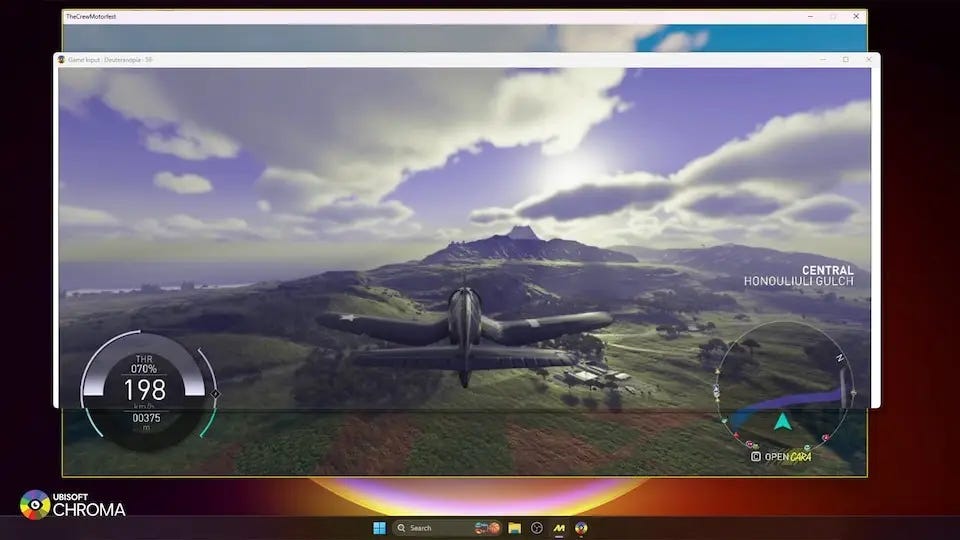The "Linux Foundation" is a misnomer. But that's fine.
Plus: Hugging Face embraces robotics, and open source to the rescue for colour-blind gamers
In issue #13 of Forkable, I reflect on an interview I did with the Linux Foundation’s Jim Zemlin, who talked about taking a “portfolio approach” to Foundation projects — and why he’s happy to keep “Linux” in the foundation’s name.
Elsewhere, Hugging Face is getting into robotics good and proper, and French video game publisher Ubisoft open sources a new tool to help developers create games with colour-blind users in mind.
Have a good weekend when it comes, folks, and as usual feel free to reach out to me with any questions, tips, or suggestions: forkable[at]pm.me.
Paul
Open issue
Jim Zemlin talks open source AI, digital sovereignty, and taking a ‘portfolio approach’ to the Linux Foundation
I caught up with Linux Foundation chief Jim Zemlin when he was in London for KubeCon earlier this month (though for various reasons, we had to meet over video in the end). Concluding our wide-ranging conversation, I asked him something I’ve wanted to ask for a while: is the “Linux Foundation” a misnomer, an outdated name for a sprawling umbrella outfit spanning a thousand open source projects, from cloud infrastructure, security, and digital wallets, to enterprise search, fintech, maps, and more?
Wouldn’t it be more fitting to call itself, oh I dunno, the “Open Technology Foundation,” or something equally prosaic but precise?
His answer, perhaps predictably, was along the lines of “nah, probably not.” The Linux brand, you see, is just too powerful to ditch.
“When I wear Linux Foundation swag into a coffee shop, somebody will often say, ‘I love Linux’ or ‘I used Linux in college,’” Zemlin said in my interview published on TechCrunch. “It’s a powerful household brand, and it’s pretty hard to move away from that. Linux itself is such a positive idea, it’s so emblematic of truly impactful and successful ‘open source.’”
The Foundation’s multi-domain focus was a central facet of our conversation, particularly off the back of OpenStack host the OpenInfra Foundation becoming a Linux Foundation project last month. This, according to Zemlin, is all part of the Foundation’s “portfolio approach” to developing projects — similar to how a private company diversifies its product lineup to ensure longer term success.
“Technology goes up and down — we’re not using iPods or floppy disks anymore,” Zemlin said. “What I realized early on was that if the Linux Foundation were to become an enduring body for collective software development, we needed to be able to bet on many different forms of technology.”
Elsewhere, we discussed the Linux Foundation’s regional spin-outs as it looks to support digital sovereignty efforts of locales such as India and Europe. And we inevitably got onto the subject of open source AI, including the rise of DeepSeek and how it represents just another “moment” for open source — similar to Linux all those years ago.
You can check out the interview in the link below.
Read more: Jim Zemlin on taking a ‘portfolio approach’ to Linux Foundation projects
The rundown
Hugging Face hugs it out with robots
AI developer platform Hugging Face is going all-in on robotics, announcing this week it has acquired open source robotics company Pollen Robotics.
The announcement comes as AI firms increasingly look to bridge the virtual and physical words through robotics. Meta’s chief AI scientist Yann LeCun recently predicted that the coming years could be the “decade of robotics,” a notion embedded in the concept that AI systems at present are lacking on several fronts — including their understanding of the physical world. Meta itself plans to invest billions into building AI-infused humanoids, while OpenAI is in the early stages of constructing an in-house robotics team.
Hugging Face, for its part, is best known for its open AI development platform and community. But it has been extending into the robotics realm, too, last year launching its first robotics library. LeRobot, as it’s called, is designed to unify the worlds of “robotics, reinforcement learning datasets and models, simulation, and real-world,” Hugging Face co-founder and chief scientist Thomas Wolf said at the time.
And now, Hugging Face wants to sell open source robots, such as Reachy 2 — a $70,000 humanoid designed for research, education, and AI experiments.
“We believe robotics could be the next frontier unlocked by AI — and it should be open, affordable, and private,” Wolf said in a statement this week. “Our vision: a future where everyone in the community, from hobbyists to enterprises, can build or use robot assistants or games, starting from open solutions instead of closed, remote controlled, hardware.”
True colours
Roughly one in 12 males (and 1 in 200 females) are colour blind — and I am one of them. For the most part, it’s not an issue — I was told at a young age that I couldn’t be an electrician or a pilot. And I figured out fairly early on that I would be an unreliable interior designer.
On a day-to-day basis, the only problems I really encounter are when vending machines or parking meters have colour-coded buttons involving red and green, and I have to figure out — often through trial-and-error — which button I need to press as per the instructions. In the digital realm, though, I do occasionally encounter issues — for instance, I may be totally oblivious that a blog post I’m reading has hyperlinks to external sources, because the colour of the hyperlinked text is way too similar to that of the main text.
Or if a particular game has colour-coded elements to it, then that too can be problematic.
This is why I was particularly excited to read about game publisher Ubisoft’s new open source tool to help developers tailor games for colour-blind users.
Available under an Apache 2.0 license, Chroma is a simulation tool designed to help detect issues that may impact colour blind gamers. It does so by simulating different types of colour-blindness, including Protanopia, Deuteranopia, and Tritanopia, placing filters over the game screen to help detect accessibility concerns.
So if you’re a developer thinking about introducing colour-coded elements to a game, such as making the enemies “red” in a first-person shooter, this could prove a useful tool to support as much as 8% of your target market.
Gumroad’s source is now available
Gumroad, the VC-backed e-commerce platform that helps creators monetize digital products, announced this month that it is now open source. Except, as online commentators quickly pointed out, Gumroad isn’t actually now open source, owing to the fact that it’s using its very own Gumroad Community License with notable restrictions.
It transpires that only businesses with less than $1 million in revenue in the previous tax year, and less than $10 million gross merchandise value (GMV), can benefit from this license. Or non-profits and government entities. If your business meets none of these conditions, then “…you may contact the licensor to discuss an alternative license.”
What does language matter, anyway?
Patch notes
OpenAI debuted Codex CLI, an Apache 2.0-licensed coding agent that runs locally from within your terminal.
Google released the Agent2Agent (A2A) protocol, an Apache 2.0-licensed protocol designed to enable “communication and interoperability” between agentic applications.
Japanese internet company LY Corporation, owned by a joint venture between SoftBank and Naver, is now a gold member of the Linux Foundation alongside the likes of Google.





